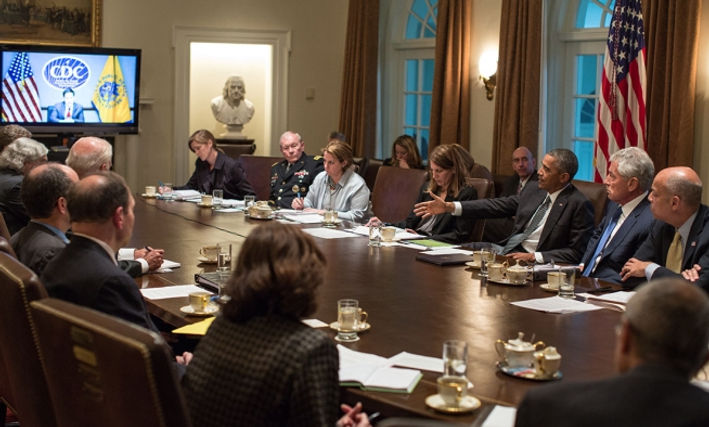Mr.
Fallman
Article II
The Executive Branch is led by the President
The President is both the head of state and head of government of the United States of America, and Commander-in-Chief of the armed forces.
Under Article II of the Constitution, the President's purpose is to be responsible for the execution and enforcement of the laws created by Congress.
The Constitution lists only three qualifications for the Presidency — 1. the President must be at least 35 years of age, 2. be a natural born citizen, and 3. must have lived in the United States for at least 14 years. The Vice President has the same requirements as the President, as the VP may become the President in a time of crisis.
And though millions of Americans vote in a presidential election every four years, the President is not, in fact, directly elected by the people. Instead, on the first Tuesday in November of every fourth year, the people elect the members of the Electoral College.
More more specific, current info on the Executive Branch:


The Executive Branch is led by the President
The President's purpose is to carry out/execute the law by either signing legislation into law or not (vetoing is a CHECK the executive has on the Legislative Branch, though) created by Congress. If the President signs a law, it is a law. That said, if the President vetoes a law, Congress may override a veto with a two-thirds vote of both houses (a CHECK the Legislative Branch has on the Executive Branch).
The Executive Branch has powers: conducts diplomacy with other nations, and the President has the power to negotiate and sign treaties, which also must be ratified by two-thirds of the Senate. Other powers include:
-
Serve as commander in chief of the armed forces
-
Convene Congress in special sessions
-
Appoint officials to lesser offices
The President can issue executive orders, which direct executive officers or clarify and further existing laws. The President also has unlimited power to extend pardons and clemencies for federal crimes, except in cases of impeachment.
The Executive Branch is led by the President and the Vice President
The current President: Donald Trump leads, with the Vice President (VP), Fifteen executive departments — each led by an appointed member of the President's Cabinet — ie, Secretary of Commerce, Secretary of Education, Secretary of State, etc, (see hand out on desk) carry out the day-to-day administration of the federal government. So... 17 people in total in the Executive Branch... That said, each Sec has thousands of federal workers under them doing important work for their Dept.
There are several other executive agencies such as the CIA and Environmental Protection Agency, the heads of which are not part of the Cabinet, but who are under the full authority of the President.
The picture to the right is a past Cabinet Meeting in the White House.
The President also appoints the heads of more than 50 independent federal commissions, such as the Federal Reserve Board or the Securities and Exchange Commission, as well as federal judges, ambassadors, and other federal offices.
